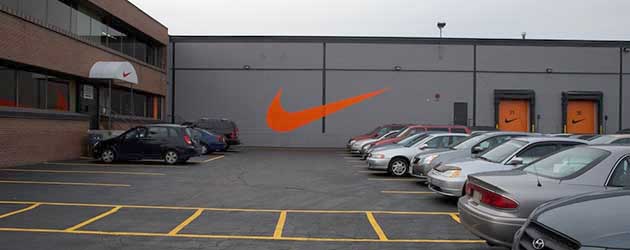Throughout the world, the health hazards of noise and vibration exposure in the workplace have been recognized, and are subject to safety standards. Most jurisdictions have Occupational Safety and Health legislation in place, which not only specifies maximum safe workplace exposure levels but also stipulates the employer’s responsibilities to protect workers’ hearing. In the United States, the Occupational Noise Exposure Standard is OSHA 29 CFR 1910.95 as set by the Occupational Safety and Health Administration (OSHA). In Canada, each province sets in own standard. For example, in Ontario, workplace noise regulations (O. Reg. 381/15) fall under the Provincial Occupational Health and Safety Act (OHSA). In Alberta, workplace noise exposure limits are set by Part 16 of the Alberta Occupational Health and Safety Code. Canada was one of the first countries to issue an occupational noise measurement standard (in 1986). whereby workplace noise exposures found in industrial settings must be measured in accordance with CAN/CSA Standard Z107.56-06, Procedures for the Measurement of Occupational Noise Exposure.
Identifying the Key Sources of Workplace Sound & Vibration
Nowadays, it is generally not sufficient to identify areas of high sound levels in the workplace, and provide ear plugs or muffs for workers in those areas. Instead, it is often the employer’s responsibility first to investigate whether engineered noise control measures are feasible, to keep the noise levels acceptably low to alleviate the need for hearing protectors. This responsibility means that the noise and vibration consultant must know more than just how to measure the sound levels throughout the facility. The consultant must also be expert in the more detailed task of identifying the key sources of sound and vibration, determining which sources must be reduced, and recommending specific noise control measures.
Workplace Noise & Vibration Control Expertise
Over the past two decades, HGC has undertaken hundreds of workplace noise and vibration studies – from 1000 MW power plants to oil refineries to large scale food production plants – not only to measure and evaluate the worker exposure levels, but also to develop effective control strategies when excessive noise or vibration are found.
If you are the health and safety representative at an industry, an industrial hygienist or an owner/manager of an industry, you may need to complete a workplace noise or vibration study, either to satisfy a regulator, or for internal best practices. The study and the report will vary, depending on your specific needs, and details including whether you already know that the exposures exceed the acceptable limits. In general, though the process will include the following key steps.
Reducing Occupational Noise & Vibration Exposure:
A Step by Step Process
- Review Noise & Vibration Limits – We will review with you the applicable noise and vibration limits. For noise, the exposure limit is often 85 dBA or 90 dBA, depending on the jurisdiction. The limits for exposure to vibration are more complex, and depend on whether the situation involves whole body vibration, or hand-arm vibration when using tools or equipment. In some cases, corporations have internal limits that are more stringent than those stipulated by the local regulators.
- Discuss Requirements & Expectations – We will discuss the requirements of your particular situation, including whether the study is required for submission to a regulator, or is being conducted for internal purposes. As well, we will need to know whether the main purpose of the study is to determine the sound and vibration exposure levels in the facility, or if instead those levels are already known to exceed the limits, in which case the focus of the study will be developing specific recommendations for noise and vibration control measures.
- Determine Noise Exposure Over Time – In most cases, the noise limits in particular are not instantaneous limits, but apply to the time-weighted-average (“TWA”) exposure level over the entirety of a typical work shift. So, in developing a plan to measure the sound and vibration levels in the workplace environment, we may need to employ “dosimetry,” whereby selected workers wear a personal monitor for an extended period of time – from several hours to a few days – to measure the TWA exposure levels directly. Or, it may be more practical to measure sound levels throughout the facility – either over a grid, or at all of the key worker locations – in order to develop a “noise map” which can then be used along with information about the time spent by workers in the various locations, to compute the TWA exposure levels.
- Determine Noise & Vibration Control Measures – Where the noise or vibration levels are measured to exceed the limits, we use our expertise in detailed source measurement techniques – such as sound intensity methods – to rank the sources, identify those requiring control measures, and develop a range of options. Our approach has always been to work closely with the manufacturers, suppliers and installers of noise and vibration control products, like silencers, mufflers, acoustical enclosures, spring isolators and elastomeric pads, to stay on the leading edge of the control technologies that are available and the physics that make them work. In fact, many manufacturers of noise and vibration control products hire us to help them develop newer, more effective technologies, and prototype test their performance.
- Deliver an Assessment Report and/or Noise Control Report – Our deliverable is a clear, concise assessment report, written in plain English. We take pride in crafting written reports that can be understood readily by everyone – not just those with specialized knowledge of noise, vibration and acoustics.


Nike Canada National Distribution Facility

Anheuser-Busch Brewery & Distribution Facility, Columbus, Ohio

Steelcase Wall Systems at Southeastern Freight Lines HQ, Columbia SC

Interior Workplace Noise Control Methods Demystified

Workplace Noise Exposure Limits in Ontario: What You Should Know

What is Sound Intensity Measurement and Analysis?
Need Answers?
Reach out to our acoustical consultants now.